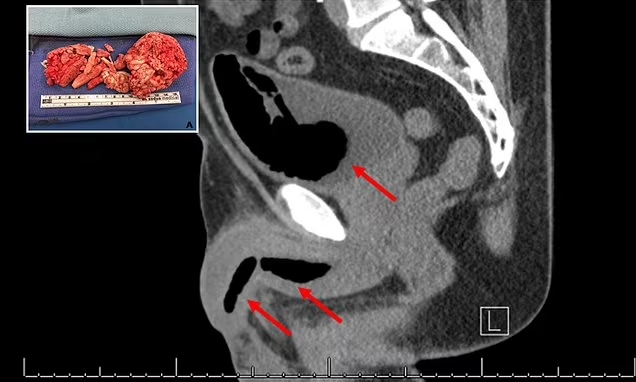No one wants to pay more than necessary for car insurance. Here are essential tips for cheap car insurance and ways to lower your bill or find cheaper coverage.
In 2024, car insurance is essential for every driver and vehicle owner, but you don't have to pay an arm and a leg to insure your vehicle. Cheap car insurance is out there, and there are plenty of ways to lower your costs, like researching the best premiums and insurance costs, bundling coverage, improving your credit, and maximizing discounts. You can also collect a bunch of auto insurance quotes and compare average rates to find which is cheapest for you.
Because insurance companies want your business, you can use this to your advantage and use price comparison options to find cheap auto insurance that works for your needs. And if you're looking for the best cheap car insurance but don't need all the bells and whistles that come with a typical plan, consider the minimum coverage you need. That way, you won't be paying for coverage that you won't use or don't need.
Below is our guide to help you learn how to get lower car insurance rates with your existing insurer.
Understanding Your Coverage Needs
Before you can accurately start shopping for affordable auto insurance, take stock of how much car insurance you need. If you're looking to lower your minimum coverage, make sure you're aware of your needs. You can then compare your current coverage and see if what you have aligns with your needs.
Are you paying for more coverage than you need? Or are you underinsured to the point where you might be financially vulnerable in the event of an accident?
As a policyholder, it’s important to have a clear understanding of the different types of auto insurance and the amount of each type of coverage you need for your situation. For example, if you're financing or leasing a car or you're considered a high-risk driver, you may be required to carry extra coverage. You can find information on minimum Coverage Restrictions for Leased Vehicles.
Here are some common insurance options,
Liability: Required in nearly every state, liability insurance covers property damage liability and bodily injury for other drivers and passengers for accidents you cause.
Collision: Collision coverage can help you pay to repair or replace your personal vehicle if you’re in an accident.
Comprehensive: Comprehensive coverage can help protect you if your vehicle is damaged in ways that don’t involve a collision. Theft, vandalism, and storm damage are examples of potential losses that comprehensive insurance may cover.
Personal Injury Protection (PIP): PIP helps with your medical bills (along with your passengers' medical bills) in the event of an accident.
Full Coverage: Full coverage is an unofficial term for a car insurance policy that includes liability insurance, collision, comprehensive, and sometimes more.
You can also examine your deductible amounts and determine whether adjusting them may be in order. (Later, when you shop around and get quotes from other insurers, these details will empower you to make sure you’re comparing apples to apples rather than getting prices for different products and different levels of coverage.)
Adjusting the types and amount of coverage you purchase can lower your car insurance costs overall. But less coverage can also leave you more exposed in the event of an accident. It’s important to find a middle ground as you try to cut costs to ensure you maintain the right level of protection.
Tips for Finding Cheap Car Insurance
You can't get affordable car insurance with just a single step. Getting low-cost insurance requires multiple steps and strategies for your driving situation. Take the information you gathered from assessing your needs and apply it toward finding car insurance that fits your finances.
Here are five tips to get the best car insurance rates possible.
1. Shop Around and Compare Quotes
Each insurer has its own methodology for setting premiums, using factors including your driving history, make, model, and age of covered car(s), marks on your driving record such as moving violations, and any other motorists who will be covered (hint: teen drivers are more expensive). Shopping around for quotes from multiple providers has the potential to reduce your auto insurance rates in a meaningful way.
You might get quotes for comparable policies with annual premiums that are hundreds of dollars apart. In addition to locking in an affordable rate, you want coverage with the best car insurance company for the money, meaning one with a history of doing business in your state and a record of covering claims in a timely and fair way.
2. Use Online Comparison Tools and Insurance Websites
As you’re searching for quotes from different auto insurance companies, online comparison tools can make the shopping process easier. Many insurance websites will also provide you with quotes from competitors alongside their own rates so you can see how the premiums measure up.
Online insurance comparison tools can save you time by eliminating the need to input your personal details over and over again. Plus, as you select the coverage options you desire, these tools ensure you’re comparing quotes for similar policies.
3. Explore Discounts and Incentives
Searching for car insurance discounts that different providers offer can be another great way to save on your premiums. There are many different discount options and incentives available. Below are some of the most common,
● Bundling discounts, also known as multi-policy discounts. You’re often rewarded with better rates when you purchase multiple policies, such as auto, life, homeowners, or renters insurance, from one company.
- Low mileage discounts
- Defensive driving course discounts
- Safe driver discounts for maintaining good driving habits
- Good student discounts for young drivers who earn good grades
- Military discounts
- Loyalty discounts for staying with a company for several years
- Autopay discounts
- Security discount for installing an anti-theft device
- Paid-in-full insurance premium discounts for paying your premium six months or a year at a time instead of monthly
- Paperless statement discount
4. Consider Different Avenues for Buying Insurance
There are three main avenues for buying car insurance — direct insurers, independent agents, and captive agents. Here’s what those terms mean,
● Direct insurers: You typically buy your insurance straight from the company’s website or app. Examples include Geico, Esurance, and Progressive.
● Captive agents: They only sell the products their company offers and cannot provide you with quotes from competitors. Examples include Farmers, Nationwide, State Farm, and Farm Bureau.
● Independent agents: They work with numerous providers, allowing them to sell products from multiple insurance companies and help you shop around for the cheapest rates and hidden discounts.
5. Beware of Potential Pitfalls
While saving money is important, certain types of discount insurance can come with pitfalls that you’re better off avoiding. For example, some discounted or cheap insurance policies may not cover permissive drivers (aka someone you gave permission to use your vehicle) or they might provide only reduced coverage. With other policies, your coverage level might drop when you drive outside of your state of residence.
It’s important to read the fine print of your auto policy to understand any coverage restrictions. And check out the online reviews and complaints for different insurers you’re considering. Once you've made a selection, be sure to obtain proof of insurance and ID cards — which you can either print out or save to your phone.
Save Money with Your Current Insurer
Switching your insurance provider can be a hassle; you have to consider their policies, apply, and much more. If you want to stay with your current auto insurance provider, there are ways you can save money on your current policy,
1. Ask for Discounts
Watching your premiums increase for the same coverage gets old fast. Call your insurance agent or insurance company and ask if you’re eligible for any of those discounts listed above. If you’re considering changing insurers or you’ve found a lower rate with a competitor, mention that.
2. Increase Your Deductibles
If you have a solid emergency fund, setting a higher deductible could lower your car insurance premiums. In return, however, you’d have to pay more out of pocket for accident repairs before your coverage kicks in.
3. Adjust Coverage Amounts
It's a good idea to take a look once a year or so at how much car insurance you need. If you have an older vehicle that’s paid in full, you might consider reducing your coverage or even switching to liability only. But you should go this route only if you’re financially able to fix your own vehicle in an accident. Additionally, find the minimum car insurance requirements for your state in the United States.
Factors That Affect Car Insurance Rates
While premiums vary among insurers, there are some common factors that affect the car insurance quotes you receive from different providers, including the following:
Vehicle Make and Model: Certain types of cars cost more money than others to insure. As a rule, new cars and more expensive cars have higher repair costs, which will lead to higher insurance rates. If you’re considering buying a new or used vehicle, it’s wise to research the cost of insurance before you make your purchase.
Age: Younger drivers typically pay more for auto insurance due to a lack of experience behind the wheel.
Coverage Selections and Limits: The types of insurance you choose and your coverage limits have a significant impact on your car insurance rates.
Credit Score: Your credit-based insurance score helps predict how likely you are to file an insurance claim. Good credit has the potential to save you money on your premiums, although some states limit or don’t allow insurance providers to use credit when pricing auto insurance policies.
Driving Record: A clean driving record should save you money on your car insurance. On the other hand, if you have a history of speeding tickets, DUIs, at-fault accidents, or other black marks, you should expect to pay higher premiums.
By understanding these factors and implementing the strategies mentioned, you can potentially save money on your car insurance premiums without sacrificing coverage. Remember to review your policy regularly and explore your options to ensure you're getting the best deal possible.
Saving Money by Switching Car Insurance Companies
According to J.D. Power, close to one-third (31%) of auto insurance customers in the U.S. have experienced a rate increase in the past year. During that same time period, auto insurance premiums have gone up an average of 15.5% to compensate for the record-high losses that insurers have experienced.
Some insurers offer loyalty discounts to discourage customers from changing providers. However, it’s still wise to review offers from competitors at least once every 12 months to confirm you’re getting the best AND cheapest car insurance coverage.
Switching car insurance companies can often result in significant savings on your premiums. Here are a few reasons why:
1. Introductory Rates: Many insurance companies offer lower rates to attract new customers. By switching, you may be able to take advantage of these introductory offers and lock in a lower premium for your coverage.
2. Special Discounts: Different insurers offer various discounts and incentives. While your current insurer may offer some discounts, another company might have additional savings opportunities that you qualify for. By switching, you could access discounts that weren't available to you before.
3. Rate Fluctuations: Insurance rates are not static and can vary over time. Factors such as changes in your driving record, the introduction of new discounts, or adjustments in the company's pricing strategy can all impact your premiums. By shopping around and comparing quotes, you can ensure you're getting the most competitive rate available.
4. Improved Coverage Options: As your life circumstances change, your insurance needs may evolve as well. Another insurance company may offer coverage options that better suit your current situation or provide additional benefits that your current policy lacks. By switching, you can tailor your coverage to better meet your needs.
Before making the switch, however, it's essential to consider a few factors:
Coverage Needs: Ensure that the new policy provides the same level of coverage or better compared to your current policy. Cheaper premiums are not beneficial if they come at the expense of adequate protection.
Cancellation Fees: Some insurers may charge fees for canceling your policy before the expiration date. Be sure to factor in any cancellation fees when calculating potential savings from switching.
Customer Service: While price is important, it's also crucial to consider the quality of customer service provided by the insurer. Research customer reviews and ratings to ensure that the new company offers reliable and responsive support.
Policy Limits and Deductibles: Review the details of the new policy carefully, including coverage limits and deductibles. Ensure that you understand the terms and conditions to avoid any surprises in the event of an accident or claim.
By weighing these factors and comparing quotes from multiple insurers, you can make an informed decision about whether switching car insurance companies is the right choice for you. While loyalty to your current insurer may offer some benefits, exploring your options regularly can help you find the most affordable coverage without compromising on quality or service.


















 English (United States)
English (United States)